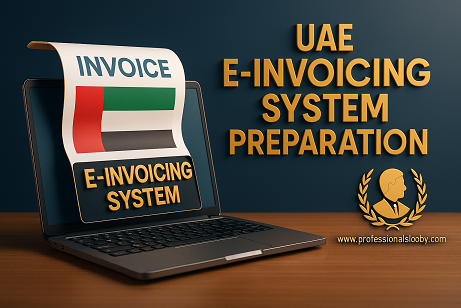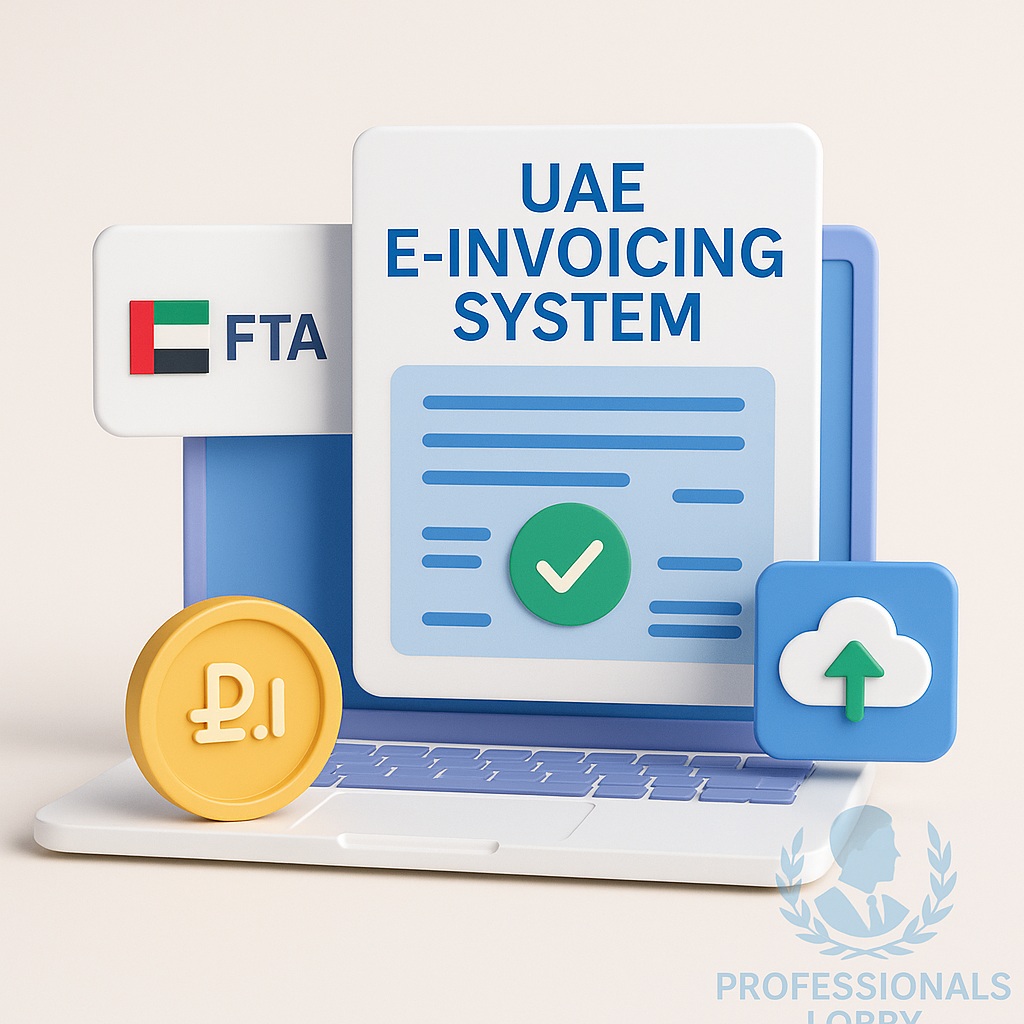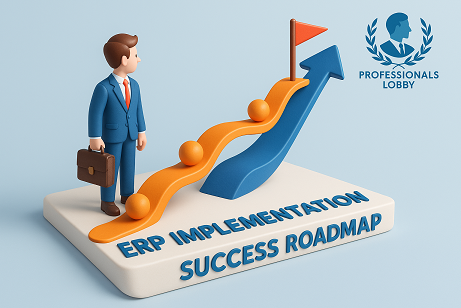The UAE Ministry of Finance is implementing a mandatory e-invoicing system based on the Peppol network and PINT-AE standards, with phased rollout beginning in 2026. This comprehensive guide provides UAE businesses with actionable steps to prepare their technical infrastructure, operational processes, and compliance frameworks for this transformative change in fiscal reporting.
Key Takeaways:
- Mandatory Timeline: Phased implementation starting 2026 with full B2B/B2G enforcement expected by mid-2026
- Technical Standard: PINT-AE (UAE adaptation of Peppol) requiring XML/JSON structured invoices
- Critical Changes: Move from PDF/paper to machine-readable formats with 50+ mandatory data fields
- Integration Model: All invoices must route through Accredited Service Providers (ASPs)
- Action Required: System upgrades, middleware implementation, and operational process changes across all invoice-issuing channels
Download Resources:
Quick Navigation
UAE E-Invoicing System Overview
The UAE is adopting a decentralized continuous transaction control (DCTCE) model using the Peppol network infrastructure with UAE-specific adaptations (PINT-AE). This represents a fundamental shift from current paper/PDF invoice practices to structured, machine-readable data exchange.
5-Corner Model Architecture
The UAE's 5-corner e-invoicing model with tax authority visibility
Implementation Phases
2024 Q4
ASP Accreditation
Technical Specifications Release
2025 Q1-Q2
Legislation Finalization
Sandbox Testing
2025 Q3-Q4
Early Adopter Program
Pilot Testing
2026 Q2-Q3
Mandatory B2B/B2G
Phased by Company Size
Key Requirements
Structured Formats
XML/JSON PINT-AE schemas (no PDF-only invoices)
Mandatory Fields
50+ required fields including new UAE-specific elements
ASP Routing
All invoices must flow through accredited service providers
Archival
5+ year retention in tamper-proof format
Required Technical Changes
Transitioning to compliant e-invoicing requires substantial changes to your IT infrastructure and application architecture. These changes span from core ERP systems to mobile field applications.
Essential ERP/Accounting System Updates
- PINT-AE Exporter Module: New component to transform native invoices to PINT-AE XML/JSON format
- Field Mapping: Align 50+ mandatory fields to existing data structures (see field mapping section)
- Validation Engine: Pre-submission validation against PINT-AE schema and business rules
- Human-Readable Output: Generate compliant PDF/HTML alongside machine-readable files
Middleware Requirements
Network Requirements
- Business-Grade Internet: Minimum 10Mbps dedicated line for headquarters
- Mobile Redundancy: 4G/5G failover for critical locations
- Latency: <500ms response time for real-time validation
Security Infrastructure
- API Security: OAuth 2.0 or mutual TLS for ASP communication
- Certificate Management: Automated renewal of digital certificates
- Data Encryption: AES-256 for data at rest and in transit
Data Retention System
- Tamper-Proof Storage: WORM (Write Once Read Many) compliant storage
- Retention Period: Minimum 5 years from end of relevant tax period
- Audit Trail: Immutable logs of all invoice lifecycle events
Disaster Recovery
- Georedundancy: At least one geographically separate replica
- Recovery Time: <4 hours RTO (Recovery Time Objective)
- Backup Frequency: Daily incremental + weekly full backups
Critical Field Mapping Requirements
The PINT-AE specification introduces numerous mandatory and conditional fields that must be mapped from existing systems:
Invoice Header (20+ Mandatory Fields)
- Invoice Number: Unique sequential numbering
- Issue Date: Gregorian date with timezone
- Due Date: Payment deadline
- Tax Registration Number (TRN): Seller and buyer
- Currency: AED or foreign currency
Line Items (15+ Mandatory Fields)
- Item Description: Standardized text
- Quantity: Unit of measure
- Unit Price: Before tax
- VAT Rate: 0%, 5%, or exempt
- Tax Amount: Calculated per line
UAE-Specific Fields
- Payment Method: Cash, credit, etc.
- Self-Billing Indicator: If applicable
- Export Details: For cross-border transactions
- Government Entity: For B2G invoices
Operational Preparation
Beyond technical implementation, successful e-invoicing adoption requires cross-functional operational changes across finance, IT, sales, and customer service teams.
New Invoice Processing Workflow
Invoice Creation
ERP/POS generates transaction
PINT-AE Transformation
Convert to XML/JSON format
Pre-Validation
Check against schema rules
ASP Submission
Route through accredited provider
Status Monitoring
Track delivery/acceptance
Archival
Store in compliant repository
Cross-Functional Responsibilities
IT Team
- System integration
- Middleware implementation
- ASP connectivity
- Archival infrastructure
Finance Team
- Field mapping validation
- Tax rule configuration
- Reconciliation processes
- Audit preparation
Operations Team
- Process redesign
- Exception handling
- Customer communication
- Training delivery
Training Requirements
| Role | Topics | Duration | Method |
|---|---|---|---|
| Finance Staff | Validation rules, corrections, reconciliation | 8 hours | Workshop + e-learning |
| Sales Teams | Field requirements, customer explanations | 4 hours | Video training |
| IT Staff | Technical architecture, troubleshooting | 16 hours | Hands-on labs |
| Management | Compliance requirements, monitoring | 2 hours | Briefing sessions |
Channel-Specific Implementation Guides
Different sales and distribution channels require tailored approaches to e-invoicing compliance. Below are specialized guidelines for common UAE business models.
E-Commerce Implementation
Key Requirements
- Real-Time Generation: Invoice created at order confirmation
- Customer Communication: Clear explanation of e-invoice delivery
- Marketplace Integration: Coordination with platform APIs
- Return Handling: Automated credit note generation
Van Sales/Mobile POS Implementation
Key Requirements
- Offline Capability: Store-and-forward functionality
- Receipt Printing: Interim customer acknowledgment
- Reconciliation: Daily sales vs e-invoice matching
- Connectivity: 4G/5G with automatic retry logic
Distribution Centers Implementation
Key Requirements
- Multi-Location Support: Entity-specific TRNs
- Bulk Processing: High-volume invoice handling
- Delivery Notes: Link to e-invoice references
- Customer Portals: Self-service invoice access
Export Sales Implementation
Key Requirements
- Export-Specific Fields: Incoterms, export license
- Currency Handling: Multi-currency support
- Tax Treatment: Zero-rated vs exempt coding
- Customs Integration: Alignment with customs docs
Comprehensive Preparation Checklist
Use this actionable checklist to track your e-invoicing implementation progress across all critical dimensions.
Governance & Planning
Technical Implementation
Testing & Rollout
Compliance & Audit
Recommended Implementation Timeline
This phased approach ensures adequate time for testing and adjustment before the mandate takes effect.
Phase 1: Preparation (Weeks 1-8)
2 Months- Stakeholder kickoff & team formation
- Current state assessment
- ASP selection & contract
- High-level solution design
Phase 2: Build (Weeks 9-20)
3 Months- PINT-AE exporter development
- Middleware implementation
- ASP integration
- Archival system setup
Phase 3: Test (Weeks 21-28)
2 Months- Sandbox testing with ASP
- Negative test case execution
- Performance testing
- User acceptance testing
Phase 4: Deploy (Weeks 29-36)
2 Months- Pilot rollout (limited scope)
- Staff training completion
- Full production deployment
- Ongoing monitoring
How Professionals Lobby Can Assist
Our team of certified tax technology experts provides end-to-end support for e-invoicing implementation across all UAE business sectors.
Readiness Assessment
- Current state evaluation
- Gap analysis vs PINT-AE
- Risk identification
- Remediation roadmap
Vendor Selection
- ASP evaluation
- ERP module assessment
- RFP development
- Contract negotiation
Integration Project
- Solution architecture
- Middleware implementation
- Field mapping
- Sandbox testing
Training & Rollout
- Role-based training
- Pilot program management
- Change management
- Post-go-live support
Get Expert Help with Your E-Invoicing Implementation
Our certified consultants will guide you through every step of compliance preparation.
Schedule Consultation


